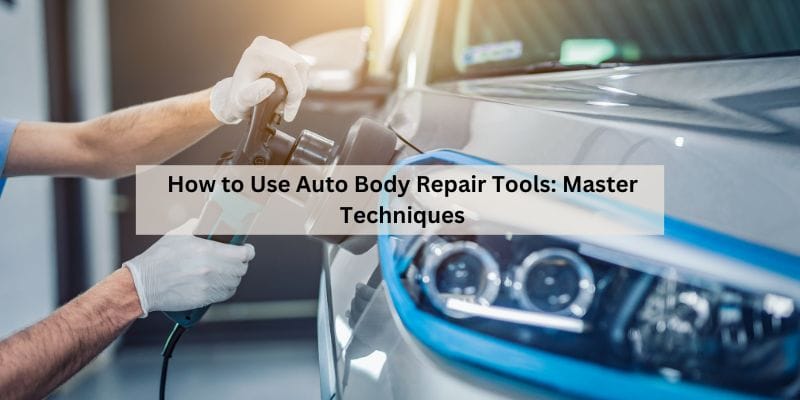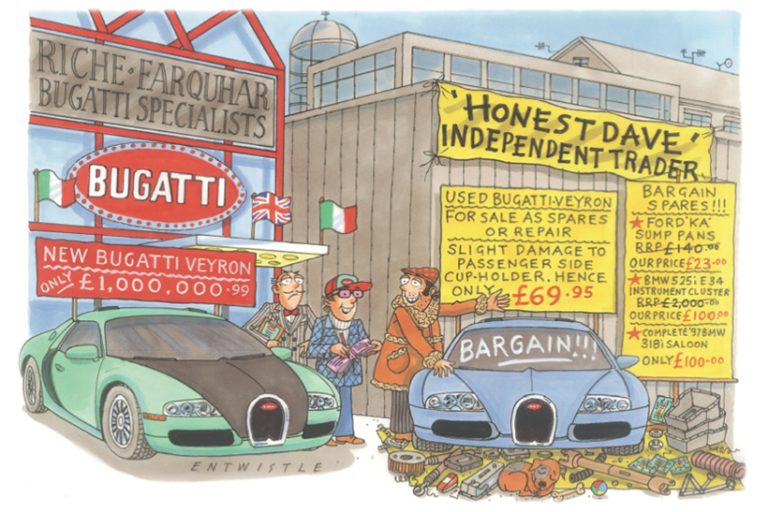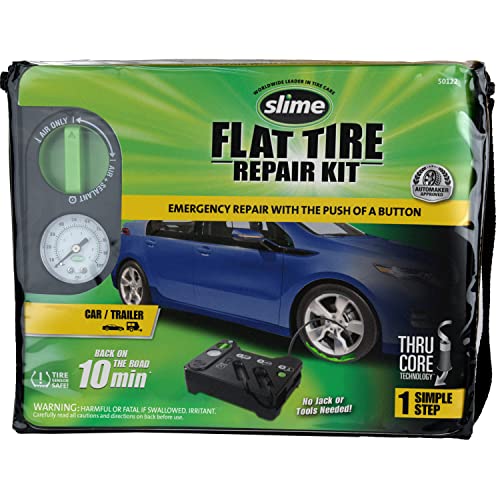How to Use Auto Body Repair Tools: Master Techniques
To use auto body repair tools effectively, follow these steps: 1. Place the dolly against the back of the dent or crease.
2. Use the hammer to make light blows from the other side of the metal, gradually flattening it into the dolly’s shape. This technique is known as panel beating and is commonly used in dent removal. It is important to learn the fundamentals of metal straightening and choose the right tools for the job.
Properly using auto body filler and understanding when to use the hammer and dolly are also key aspects of successful auto body repair. By following these steps and techniques, you can achieve professional-looking results.
Introduction To Auto Body Repair Tools
Auto body repair tools are essential for anyone looking to perform basic repairs on their vehicle. A basic tool kit should include items such as hammers, dollies, body filler, and a slide hammer. When working with these tools, safety gear is crucial to prevent injuries, so always wear protective gear such as safety goggles and gloves. Additionally, it’s important to learn the proper techniques for using these tools to avoid causing further damage to the vehicle. By understanding the correct methods and safety precautions, beginners can effectively use auto body repair tools to tackle minor dents and dings on their cars.
Preparing The Work Area
Before starting any auto body repair work, it’s crucial to ensure that the work area is clean and well-organized. Remove any debris and clutter to create a safe and efficient space for the task at hand. Proper cleaning of the work area also helps in avoiding any potential hazards during the repair process.
Good lighting is essential for accurate assessment of the repair area. Ensure that the work area is well-lit to identify any imperfections in the body surface. Accessibility to the repair site is also important. Clear any obstacles and ensure that the tools and equipment are easily reachable, enabling a smooth workflow.
Dent Removal Techniques
Learn the art of dent removal techniques and how to use auto body repair tools effectively. From using a hammer and dolly to employing the off-dolly technique, master the skills to remove dents and restore your vehicle’s body with precision and finesse.
| Dent Removal Techniques: |
| Hammer and Dolly Basics: |
| To remove dents using a hammer and dolly, first, the dolly is held against the back of the crease, and the hammer is used from the other side, making many light blows. As the metal is pushed against the dolly, it is progressively flattened into the dolly shape. If the dolly is slightly curved, the panel will be formed to match that curve. Hammer-off dolly is another technique that involves using the hammer to push metal against the dolly and then striking the metal directly with the hammer to work out the dent. It’s important to note that the hammer and dolly technique is suitable for small to medium-sized dents. |
Working With Body Fillers
When using auto body repair tools, it’s crucial to prepare the surface before applying the filler. Ensure the area is clean and free of rust or paint. When applying the filler, use a spreading motion to achieve an even layer. After applying, allow sufficient drying time before sanding the filler. Use a fine-grit sandpaper for a smooth finish. Always wear protective gear and work in a well-ventilated area. Remember to follow manufacturer instructions for best results.
Metal Shaping Fundamentals
Learn the metal shaping fundamentals of how to use auto body repair tools effectively. Discover techniques such as using a hammer and dolly to remove dents, panel beating hammers, and the off dolly technique for dent removal. Gain valuable insights on selecting the right tools and protecting adjacent panels for a successful repair.
Metal shaping fundamentals are crucial for auto body repair professionals. Understanding metal properties is key to achieving the desired shape without causing damage. Shaping techniques such as using a hammer and dolly, panel beating hammers, and hammer-off dolly require precision and patience. It’s important to select the right tools and identify indirect damage before starting the repair process. Proper prep work and protecting adjacent panels are also essential. One technique that can be used is metal shrinking, which can help reduce the amount of filler needed. While there are many tools available, it’s important to choose the right one for the job. By following these fundamentals, auto body repair professionals can successfully use auto body repair tools to remove dents and achieve a flawless finish.Advanced Dent Repair
|
When it comes to advanced dent repair, there are two techniques that are commonly used: heat shrinking and using a stud welder. Heat Shrinking: This technique is used to remove small dents in the metal by heating the area with a torch until it is red hot and then cooling it rapidly with water. The process causes the metal to contract, and the dent pops out. Using a Stud Welder: This technique involves welding studs to the damaged area and then using a slide hammer to pull the dent out. The process requires skill and precision to avoid damaging the surrounding paint or metal. Both of these techniques require specialized auto body repair tools and should only be attempted by experienced professionals. |
Paint Preparation
When preparing for painting, sanding is a crucial step to ensure a smooth surface. Use masking techniques to protect areas not being painted. Proper paint preparation is essential for a flawless finish.
Finishing Touches
Learn the essential techniques for using auto body repair tools to achieve the perfect finishing touches. From using a hammer and dolly to remove dents to understanding how to properly use panel beating hammers, these videos provide step-by-step instructions and tips for achieving professional results.
Whether you’re a beginner or an experienced auto body technician, these resources will help you master the art of auto body repair.
When it comes to auto body repair, finishing touches are just as important as the initial repairs. Polishing and buffing can give your vehicle a sleek, professional look. Use a high-quality buffing compound and a foam or wool pad to remove any scratches or swirl marks. Don’t forget to reassemble any body parts that were removed during the repair process. Take your time and make sure everything is properly aligned and secured. With the right tools and techniques, you can achieve a flawless finish on your auto body repairs.Maintenance Of Auto Body Tools
Maintaining your auto body repair tools is essential to ensure longevity and efficiency. Regular inspection and care are crucial to keep your tools in optimal condition. Cleaning your tools after each use will prevent corrosion and damage. Proper storage in a dry and secure location will further protect them from wear and tear. Additionally, inspecting for any signs of wear and addressing them promptly will extend the lifespan of your tools. By following these maintenance practices, you can maximize the performance and durability of your auto body repair tools.
Frequently Asked Questions
How To Use A Hammer And Dolly To Remove Dents?
To remove dents using a hammer and dolly, follow these steps: Hold the dolly against the back of the dent and lightly strike the dent from the other side with the hammer. Repeat until the dent is flattened and matches the dolly’s shape.
It’s important to learn the proper technique to avoid cracking or damaging the panel.
How Do You Use A Car Dent Repair Tool?
To use a car dent repair tool, first, identify the dent and assess its severity. Then, choose the appropriate tool for the job, such as a hammer and dolly or a dent puller. Follow the instructions provided with the tool, which may involve applying pressure or pulling to remove the dent.
Practice caution and take your time to achieve the desired results.
How To Use Panel Beating Hammers?
To use panel beating hammers, place a dolly against the back of the crease and use the hammer from the other side. Make light blows, gradually flattening the metal into the shape of the dolly. The panel will match the curve of the dolly if it is slightly curved.
This technique is known as panel beating.
What Is The Off Dolly Technique?
The off dolly technique is a method used in dent removal where a dolly is held against the back of the dent while a hammer is used to make light blows from the other side. The metal is progressively flattened into the shape of the dolly, matching its curve if it is slightly curved.
This technique is commonly used in panel beating.
Conclusion
Learning how to use auto body repair tools is essential for anyone looking to tackle dent removal and panel beating. By mastering techniques such as using a hammer and dolly, you can effectively flatten and shape metal, restoring the appearance of your vehicle.
It is important to understand the proper use of each tool, as well as the importance of prep work and identifying damage. With the right tools and knowledge, you can confidently repair dents and achieve professional results.







